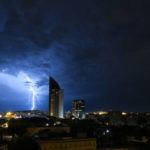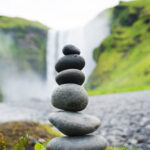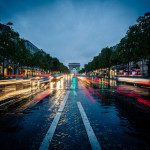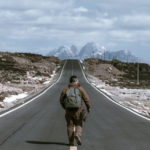Light painting combines the fundamentals of shooting images in the dark with the creative twist of using artificial light that almost raises to the level of painting. Needless to say, in order to understand light painting you first need to understand how to shoot in the dark. This new video tutorial shares extensive tips and tricks to create light painting masterpieces along with night photography:
Fundamentals of Night Photography
- Avoid noise by shooting at ISO 100 or 200. Modern digital cameras have excellent noise handling features, but when it comes to high quality printable images, the lower the ISO, the better the result.
- Use faster lenses for better auto-focusing. Slower lenses have that much more trouble auto-focusing compared to faster lenses. Primes with f/2.8 or wider apertures make it easier to auto-focus.
- At the end of the day, however, manual focusing is recommended, given the fact that in extremely dark conditions even faster lenses have trouble auto-focusing. Alternatively, you can switch to auto-focusing, illuminate the subject, lock focus, and then switch back to manual.
- As far as metering goes, it’s ideal to use matrix metering rather than spot or center-weighted.
- Pay heed (or not as in this case) to the histogram. When you’re shooting in the dark, the histogram will have significant spikes toward the left and right. The ones on the right with the associated blinkies indicate that you are losing your highlights. These blinkies (highlight warnings) point toward the light sources. This is something that is normal and thus should be ignored.
- When composing look for contrast. Look for subjects that have a lot of color or elements that respond well to light. A black sky against an illuminated bright object, such as a building, will look dull. Recompose to crop out much of the sky, and your composition will definitely look better.
Civil vs. Nautical vs. Astronomical Twilight

Nautical vs Astronomical vs Civil Twilight
One of the many misconceptions that Tim Cooper clears is the right definition of sunset and the many different types of twilight.
Civil Twilight

Civil Twilight
Sunset is the actual moment when the sun is at the horizon. What most photographers think of as sunset is actually the civil twilight, when the sun has just gone down and the sky is bright with all the yellow, red, orange, and purple hues. This is a magical time when the hues in the sky match the colors of man-made objects like street lights.
Nautical Twilight
Nautical twilight is about an hour after the sun goes down. This when the sky is a bit darker compared to civil twilight, but not completely dark.
Astronomical Twilight

Astronomical Twilight
Finally, astronomical twilight is the time of the day when the sky is pitch black. This is also the time when you should practice your star trails and Milky Way photography. If you are shooting other subjects, Cooper suggests you crop out the sky as much as possible.
Light Painting

Cooper painted this arch with a flashlight over a 15 minute exposure at f/2.8.
The above image is a classic example of Cooper’s light painting technique. Using tools like a simple flashlight, he ‘paints’ this arch while shooting a 15-minute exposure at f/2.8. The long exposure duration is what created the beautiful star trails in the background. During the whole exposure Cooper painted the arch for this dramatic effect.
Cooper goes into depth and shares more valuable tips in the rest of the video. It’s a great starting point for anyone new to night photography.
Further Training on Light Painting Photography
Check out Trick Photography and Special Effects by Evan Sharboneau. This is a very popular instructional eBook that explains how to create most of the trick photos that often capture attention and amazement from viewers. It also teaches the basics that are essential before moving onto advanced techniques. With 300+ pages of information and 9 hours of video tutorials, it is very detailed and includes extensive explanations of many complicated methods that are very fun to learn.
It can be found here: Trick Photography and Special Effects
Like This Article?
Don't Miss The Next One!
Join over 100,000 photographers of all experience levels who receive our free photography tips and articles to stay current:






Absolutely loved this video tutorial. I’ve been light painting for a little while and I will now be much better equipped to get better results. :D
I really enjoyed this video and leaned a lot about this subject from it. My only negative comment on it is that the person videoing this did not start taking shots of Tim pointing the pointer on a picture when he was explaining where he was directing the light to until at least 30mins into the video. This meant that we had to sort of guess which part of the scene he was talking about.
Christina
Love this website. Perfect for me because I am learning about photography on my own. I also want to share your articles on Facebook.